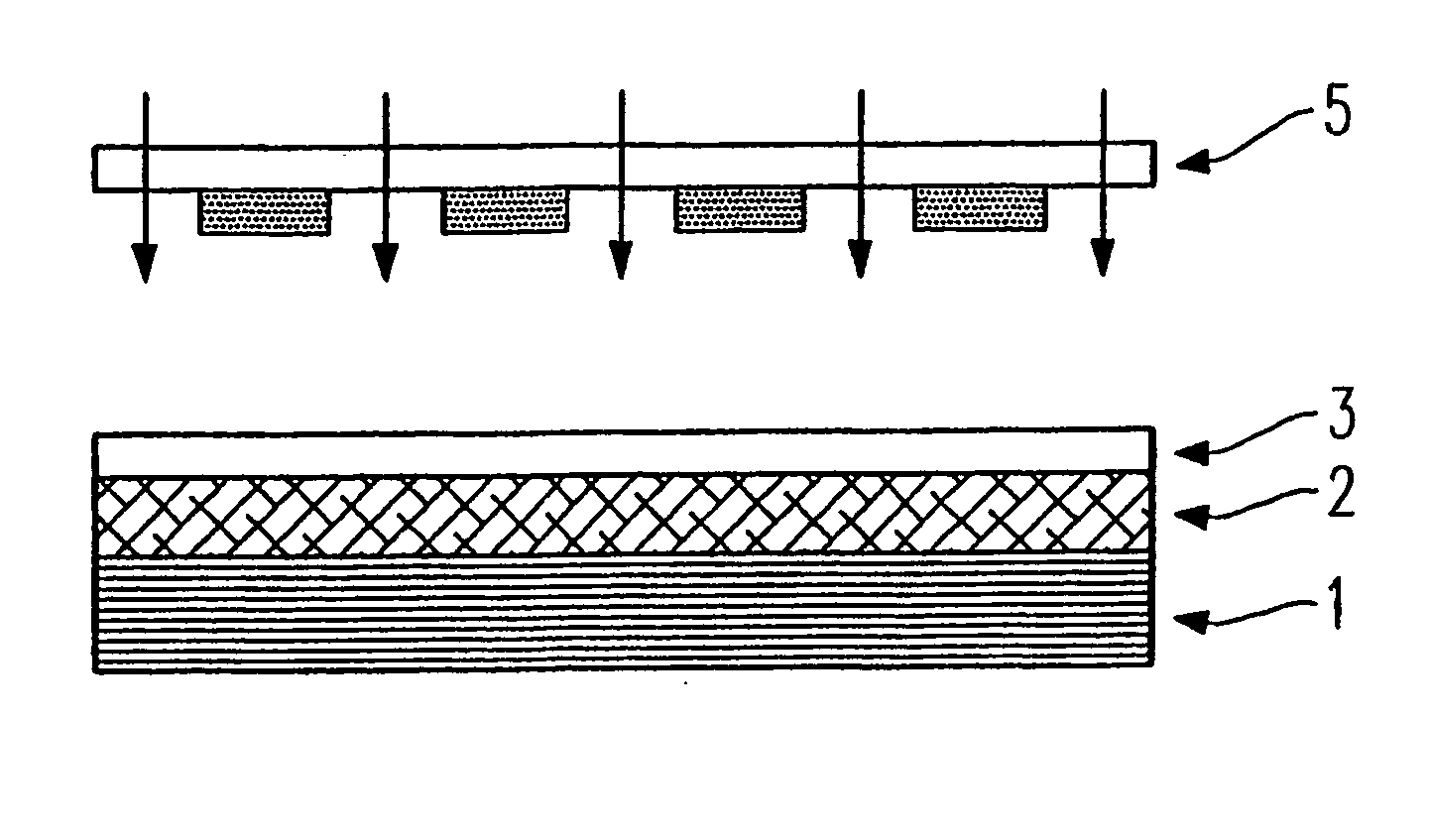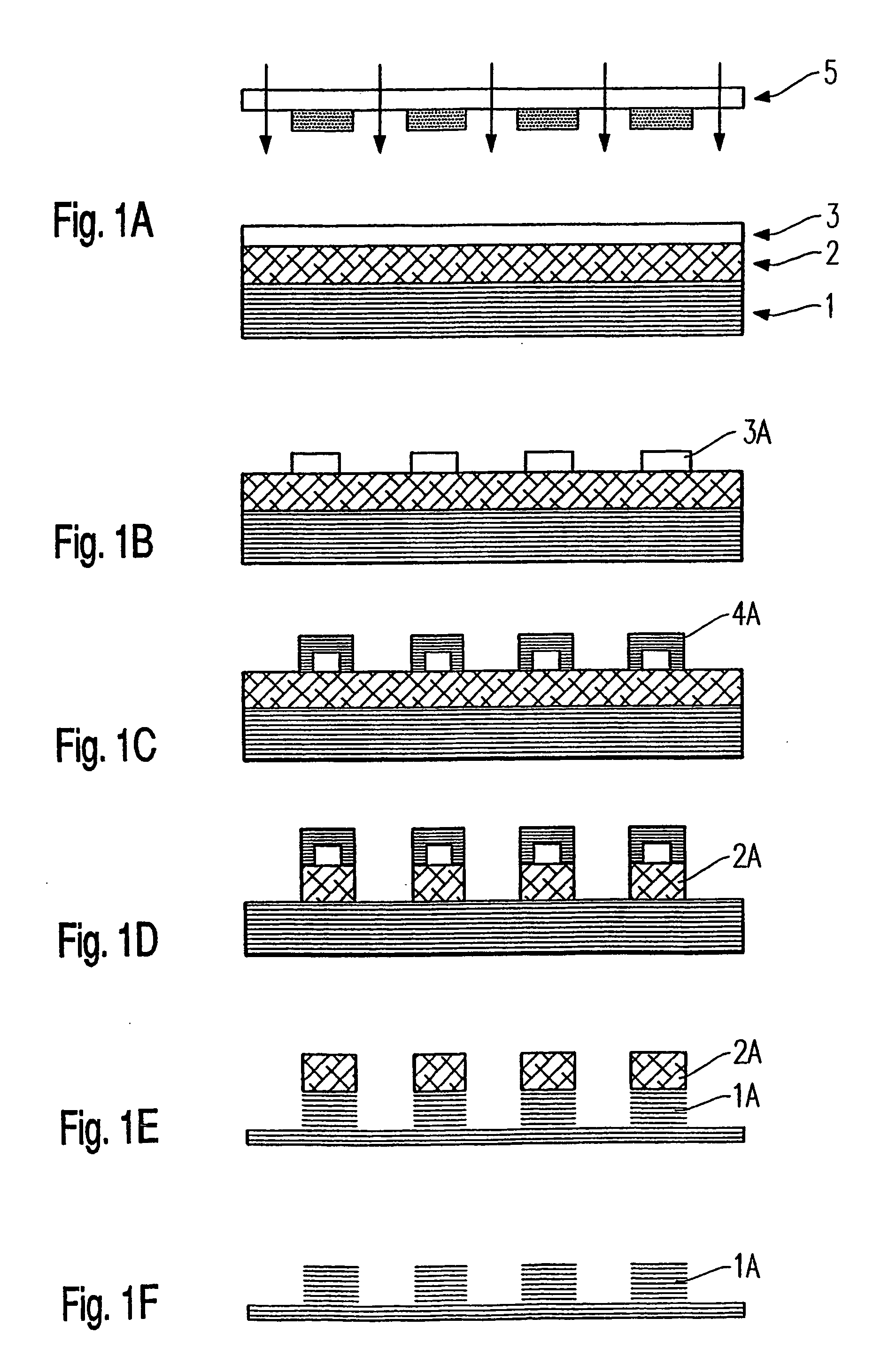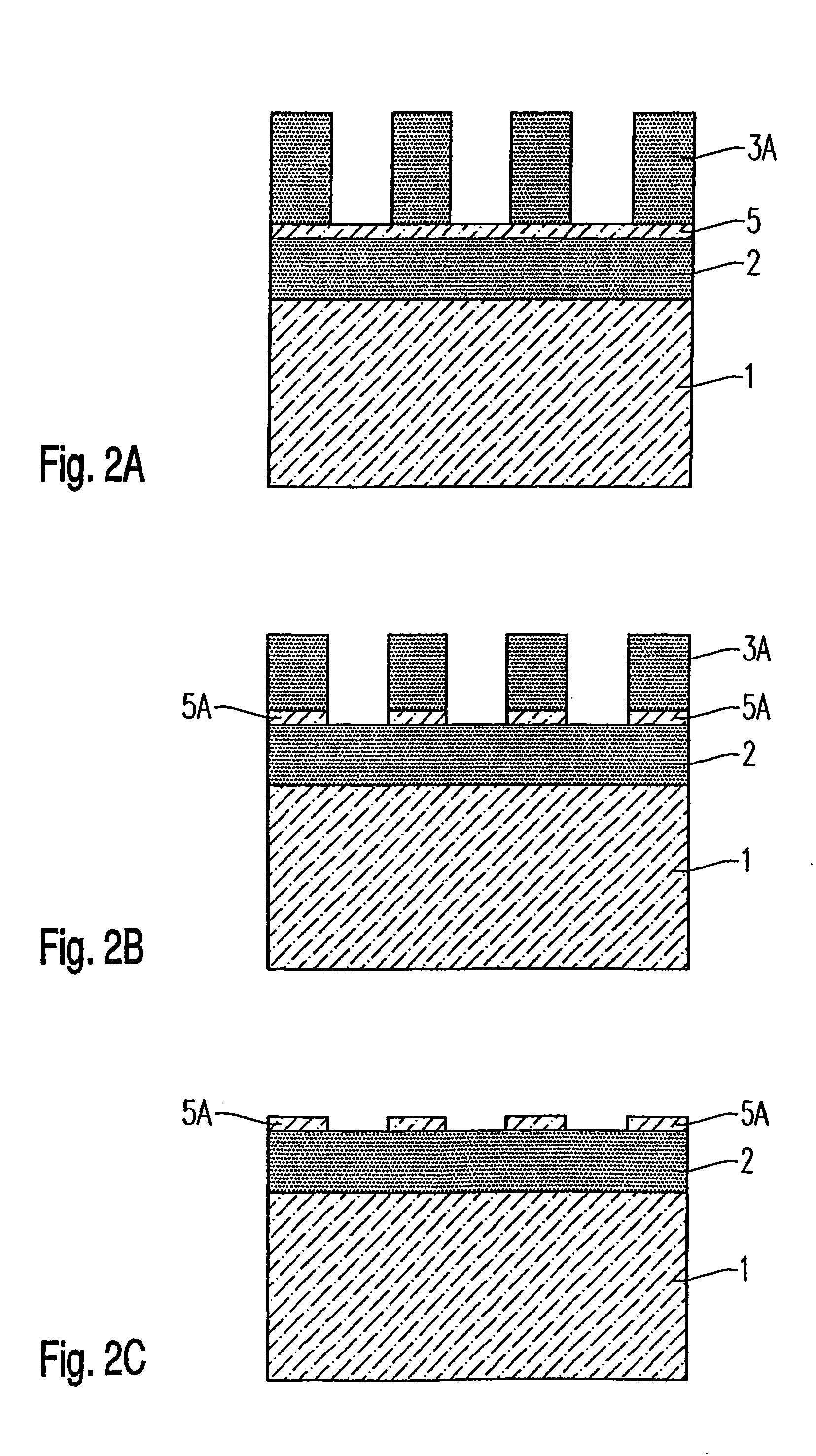Photolithographic patterning process using a carbon hard mask layer of diamond-like hardness produced by a plasma-enhanced deposition process
a technology of diamond-like hardness and photolithography, which is applied in the direction of photomechanical treatment, instruments, electrical equipment, etc., can solve the problems of not being generally suitable, open, and not being able to control the polymer formed from the resist during the etching process, and achieve the effect of enhancing the etching process and optimal diamond-like hardness properties
- Summary
- Abstract
- Description
- Claims
- Application Information
AI Technical Summary
Benefits of technology
Problems solved by technology
Method used
Image
Examples
Embodiment Construction
[0033] In accordance with FIG. 1A, a substrate 1 which is to be patterned is provided, which substrate may, for example, be a chip or wafer into which a matrix-like arrangement of trench capacitors has already been processed, these trench capacitors each belonging to memory cells. The patterning process illustrated in the following text by way of example is intended to produce insulation regions (STI) between the trench capacitors. Since the sections which are to be removed in order to produce the insulation regions also in each case include partial sections of the processed trench capacitors, accordingly it is also necessary to etch silicon oxide, since the trench capacitors generally have an insulation collar including silicon oxide.
[0034] A carbon hard mask layer 2 is applied to the substrate 1 which has undergone preliminary processing of this nature. As described, the production of the carbon hard mask layer 2 is effected by a plasma enhanced deposition process. In the specifi...
PUM
| Property | Measurement | Unit |
|---|---|---|
| temperature | aaaaa | aaaaa |
| exposure wavelengths | aaaaa | aaaaa |
| exposure wavelengths | aaaaa | aaaaa |
Abstract
Description
Claims
Application Information
 Login to View More
Login to View More - R&D
- Intellectual Property
- Life Sciences
- Materials
- Tech Scout
- Unparalleled Data Quality
- Higher Quality Content
- 60% Fewer Hallucinations
Browse by: Latest US Patents, China's latest patents, Technical Efficacy Thesaurus, Application Domain, Technology Topic, Popular Technical Reports.
© 2025 PatSnap. All rights reserved.Legal|Privacy policy|Modern Slavery Act Transparency Statement|Sitemap|About US| Contact US: help@patsnap.com



